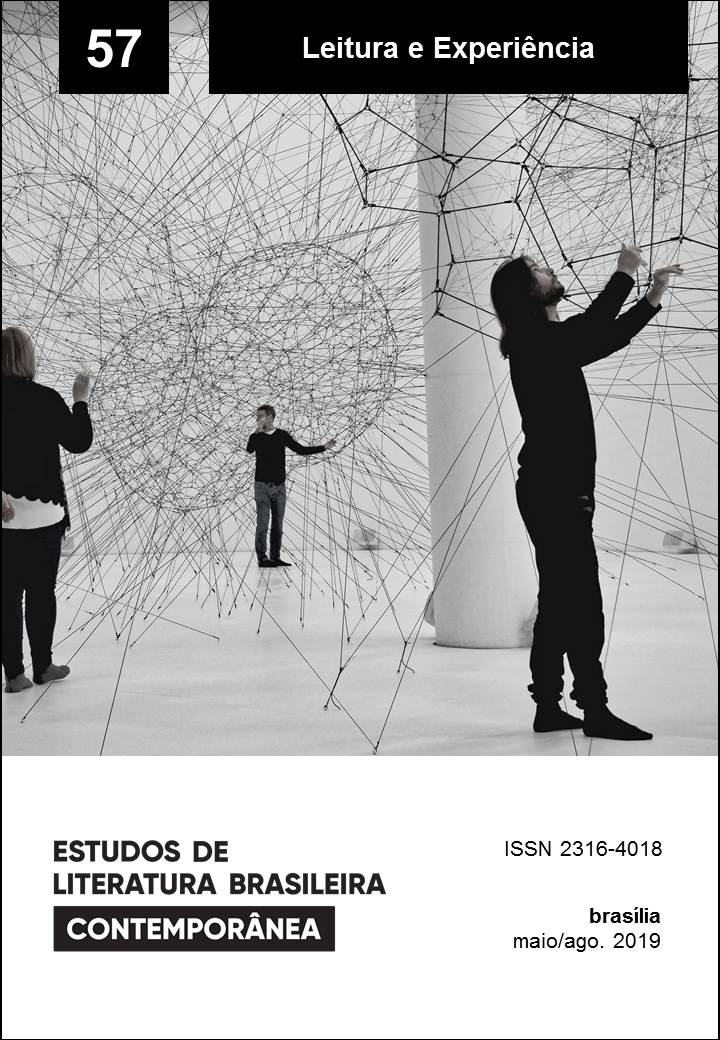The apocalyptic conflict in Assunção de Salviano, by Antonio Callado
DOI:
https://doi.org/10.1590/2316-40185719Keywords:
literature, imaginary, Christianity, communismAbstract
What is the role of art in the formation of the imaginary? An unquestionable certainty is the fact that through art one can glimpse new images, potentially instituting the renewal of unconscious archetypes. Following a detailed description of the later chapters of Assunção de Salviano, by Antonio Callado, the main purpose of this investigation is to show how literary art institutes and renews images of the sacred, especially archetypes of Christ and Antichrist. Based on the hermeneutic of Gilbert Durand's imaginary, the correlation between the alchemical world of symbols and the experiences and knowledge of the psychology of the unconscious of Carl Gustav Jung, as well as Gaston Bachelard’s dream-creativity, this study analyses the development of Salviano’s character after his Christian religious conversion and his “great conflict” with the leader of the Communist Party. Thus, the effect of literary art in the fabrication of new images of unconscious archetypes, manifested in the clash between the communist imaginary and the imaginary of the Christian doctrine of a lost paradise, is consequently revealed.
Downloads
References
BACHELARD, Gaston (2013). A terra e o devaneio da vontade: ensaio sore a imaginação das forças. Tradução
de Maria Ermantina de Almeida P. Galvão. São Paulo: Martins Fontes.
CALLADO, Antonio (1954). Assunção de Salviano. Rio de Janeiro: José Olympio Editora.
DURAND, Gilbert (2002). As estruturas antropológicas do imaginário: introdução à arquetipologia geral.
Tradução de Hélder Godinho. São Paulo: Martins Fontes.
ELIADE, Mircea (s/d). Mito do eterno retorno. Tradução de José A. Ceschin. São Paulo: Mendonça.
ELIADE, Mircea (1972). Mito e realidade. São Paulo: Perspectiva.
ELIADE, Mircea (1979). Imagens e símbolos. Lisboa: Minerva.
ELIADE, Mircea (1992). O sagrado e o profano. Tradução de Rogério Fernandes. São Paulo: Martins Fontes.
ELIADE, Mircea (2000). Mitos, sonhos e mistérios. Tradução de Samuel Soares. Lisboa: Edições 70.
ELIADE, Mircea (2008). Tratado de história das religiões. Tradução de Fernando Tomaz e Natália Nunes. São
Paulo: Martins Fontes.
ELIADE, Mircea (2013). Mito e realidade. Tradução de Pola Civelli. São Paulo: Perspectiva.
JUNG, Carl Gustav (s/d). O homem e seus símbolos. Tradução de Maria Lúcia Pinho. 5. ed. Rio de Janeiro:
Nova Fronteira.
JUNG, Carl Gustav (2011a). Mysterium Coniunctionis: os componentes da coniunctio, paradoxa, as
personificações dos opostos. Petrópolis: Vozes.
JUNG, Carl Gustav (2011b). Escritos diversos. Tradução de Mateus Ramalho Rocha e Lúcia Orth. Petrópolis: Vozes.
JUNG, Carl Gustav (2012a). Os arquétipos e o inconsciente coletivo. Tradução de Maria Luiza Appy e Dora
Mariana R. Ferreira da Silva. Petrópolis: Vozes.
JUNG, Carl Gustav (2012b). Resposta a Jó. Tradução de Mateus Ramalho Rocha. Petrópolis: Vozes.
KUJAWSKI, Gilberto de Mello (1994). O sagrado existe. São Paulo: Ática.
MAGALHÃES, Antonio; BRANDÃO, Eli (2012). O diabo na arte e no imaginário ocidental. In:
MAGALHÃES, Antonio et al. (Orgs.). O demoníaco na literatura. Campina Grande: EDUEPB.
OTTO, Rudolf (2007). O sagrado: os aspectos irracionais na noção do divino e sua relação com o racional.
Tradução de Walter O. Schlupp. São Leopoldo: Sinodal/EST; Petrópolis: Vozes.
PENIDO, Maurílio Teixeira Leite (1949). O itinerário místico de São João da Cruz. Petrópolis: Vozes.
PITTA, Danielle Perin Rocha (2005). Iniciação à teoria do imaginário de Gilbert Durand. Rio de Janeiro: Atlântica.
Published
How to Cite
Issue
Section
License
Authors who publish in this journal agree to the following terms:
a) The authors maintain the copyright and grant the journal the right of first publication, the work being simultaneously licensed under the Creative Commons Attribution License-Non Commercial 4.0 which allows the sharing of the work with acknowledgment of the authorship of the work and publication this journal.
b) Authors are authorized to enter into additional contracts separately, for non-exclusive distribution of the version of the work published in this journal (eg publish in institutional repository or as a book chapter), with authorship recognition and publication in this journal.
c) Authors are allowed and encouraged to publish and distribute their work online (eg in institutional repositories or on their personal page) after the editorial process, as this can generate productive changes, as well as increase the impact and citation of published work (See The Effect of Free Access).
d) The authors of the approved works authorize the magazine to, after publication, transfer its content for reproduction in content crawlers, virtual libraries and the like.
e) The authors assume that the texts submitted to the publication are of their original creation, being fully responsible for their content in the event of possible opposition by third parties.


